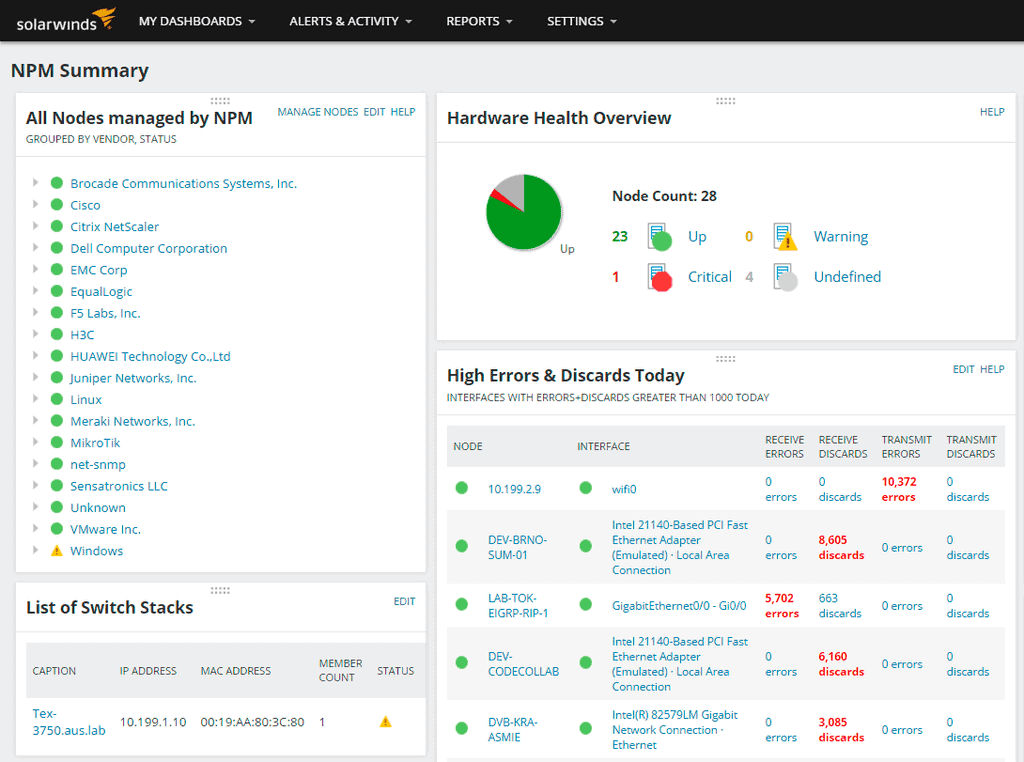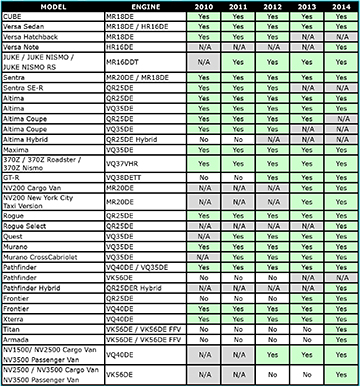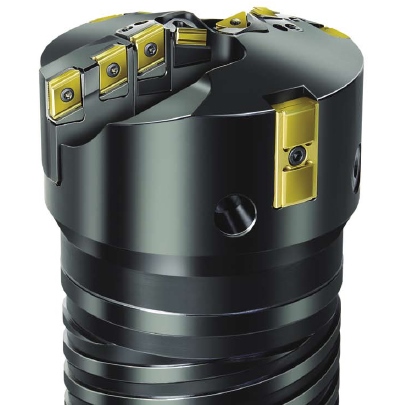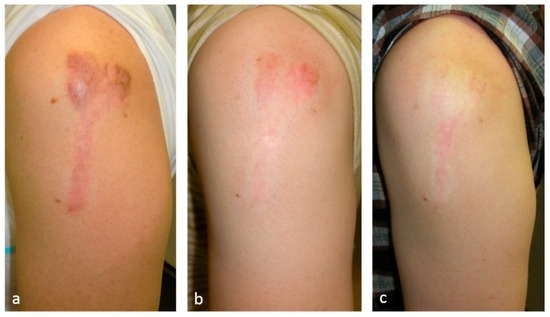Neem oil for plants
Azadirachtin vs. External contact or minute ingestion doesn't pose a threat, but we should still take care to avoid their exposure whenever it's possible by applying the pesticide in the early Most neem oil is in an ultrafine paraffin base, so you want to be kinda careful about sunshine and the kinds of plants you put it on. TRIPLE ACTION NEEM OIL. Less frequently, the root, flower, and fruit are also used. Neem oil is made from the seeds of the Azadirachta indica tree that is native to South Asia. It can change in color a bit from golden yellow to dark or reddish brown. Neem enters the system and blocks the real hormones from working properly. 5 % dilution of neem plant spray you need: 5 ml (1 tsp) neem oil (use pure, cold pressed oil) 1-2 ml (1/3 tsp) insecticidal soap or other detergent. It can also be used in creams, soaps and other cosmetic products. Broad Sprectrum Fungicide/ Insecticide/ Miticide.

Baking soda and neem oil as organic fungicide. Fill a spray bottle or sprayer with the Neem oil and warm water mixture. You can use it to safely treat your house plants for mealybugs, aphids, whiteflies, thrips and fungus gnats. Fight Plant Fungi This ready-to-use spray is a fungicide used in prevention and control of various fungal diseases. Can be used on indoor plants. This treatment can be used both to treat and prevent lice. What makes Neem so special is that it is 100% natural and safe to use. When the leaves on your plant look like they are covered with thousands of tiny spots, chances are you have a spider mite infestation. Makes a great dormant spray.

First, add the oil to warm water in a 1:1 ratio. Neem Oil is a naturally occurring, organic fungicide, insecticide and miticide for use on ornamentals, trees, shrubs, vegetables, fruit and nut trees. Neem Oil leaf polish should be applied early or late in the day as hot sunlight may cause leaf burn. This is an organic recipe that will take care of the nasty pests that are eating your plants. Azadirachtin affects insects as an insect growth regulator, anti-feedant, repellent, sterilant, and oviposition inhibitor. Neem oil can protect your fruit trees and berry bushes. 15. Neem oil can kill fire blight, a bacterial disease that causes the leaves of plants to wilt and appear as though they have been burned. Neem Oil has many other functions - it serves as a fungicide, a bactericide, and it kills Plant Parasitic Nematodes but is compatible with Beneficial Nematodes.

Nontoxic: As long as it isn’t sprayed directly on them, neem oil is nontoxic to beneficial garden insects such as predatory wasps, honeybees, earthworms, ants, spiders, ladybugs, and adult butterflies. Controls eggs, larvae and adult stages of insect pests, including aphids, spider mites, and whiteflies. Neem oil, with or without azadirachtin, is practically non- toxic to birds, mammals, bees (if applied late evening or early morning when bees are inactive) and plants, but is slightly toxic to fish and other aquatic animals. Now that the plants are 2 feet tall, and now that it’s nearly 90 degrees in Tennessee almost daily, I only water the base of the plants. Neem Oil – Organic Pesticidal Spray & Soil Drench View Larger Image Neem Oil is extracted from Neem trees and contains a compound called Azadirachtin that is useful for fighting common plant pests such as fungus gnat larvae, spider mites, and grasshoppers (see larger list below). Used as a soil drench, Neem Oil acts as an systemic pesticide, meaning the plant will absorb the Azadirachtin compound and distribute it throughout its vascular system. Unlike its synthetic counterparts, neem oil is non-toxic and naturally degrades into the environment and does not cause harm to animals, birds, fish and other wildlife. Available in small bottles for home use, pure neem oil must be mixed with water so that the oil makes up no more than 2 percent of the garden spray. The Fate of Neem Neem is about to be banned from garden shelves; and what will be the fate of Effective Microorganisms? by Art Drysdale .

70% NEEM OIL is most effective when applied every 7 to 14 days. Tomato leaves are covered in tiny hairs that will resist the oil if the soap is not present. For heavy insect populations, spray on a 7 day schedule. A few drops of mild liquid soap, such as nondetergent dish soap, helps the spray stick to plants. Garden insect pests cannot build up a resistance against these oils. Bon-Neem for house plants is a neem oil insecticide that's particularly effective. If you're an eco-conscious home gardener, you'll probably reach for a plant-based pesticide such as neem oil to minimize the effects of chemicals on the environment. 9. But the coolest part of all is that this mix is safe for beneficial insects like honey bees and ladybugs because they don't eat the treated plants.

Neem oil is an excellent foliar plant spray. Neem oil is considered nontoxic to humans, birds, and other animals as well (see below) and can be used on fruits, vegetables, and flowering plants. Kills all stages of insects - eggs, larvae and adults. You can see a wide range of its uses in this article on neem oil for plants. It kills common plant pests, such as mites, flies and aphids, and common diseases, such as powdery mildew and rust. Neem oil is deemed as a vegetable oil as it is got from the fruits of the Neem plant. Neem oils can be used as a foliar spray or soil drench. For 1 liter or 1 quart of a 0. Here are some great uses of neem oil you may have missed: Comments 1.

This means the oil is present throughout the plant structure and insects dining on your plant will consume a dose of Neem oil. Here we have listed some of the common machines required to start a neem oil mill plant including Boiler, Bucket Elevator, Screw Conveyor, Cooker / Kettle, Oil Expeller Machines, Crude neem oil tanks, Filter press machine with Pump, Filtered oil tanks and Volumetric filling machine. Home made organic anti fungus spray and anti pest spray for vegetables and ornamentals. I'm sure I will see the results from the Neem Oil applications next spring when everything starts to bloom. Other important compounds in neem oil include nimbidin, nimbidol, gedunin, salannin and quercetin. Insecticide/Miticide Use: Apply at first sign of insects/mites. To make your own spray, mix 2 teaspoons of neem with a few drops of dishwashing liquid in a gallon of water. The active insecticidal component in Neem is azadirachtin. Neem is effective against bugs that eat or chew on plants, such as: aphids, mites, Japanese beetles, leaf-eating caterpillars, squash bugs, Colorade potato beetles and mealybugs.

For example, if you spray 6 times this year, that’s about 3-6 Tbsp of neem oil per 1000 square feet each time. Neem oil is prized for its effectiveness against a broad range of pests including aphids, mites, scales, thrips, whiteflies and mealybugs. Concentrated Triple-Action Neem Oil is a botanically derived organic pesticide that helps control fungi, insects and mites and can be used as DIY pest control on ornamental flowering plants, trees, shrubs, foliage, vegetables, herbs, fruits and nuts. Importantly, make sure to follow the label instructions for the best results. The warm water and soap help the water mix evenly with the oil and makes it more effective. It can be used in and around the home and home garden up to day of harvest. Don’t use more Neem oil than is recommended; a higher concentration will not be more efficient. Neem oil comes from the tree Azadirachta indica, a South Asian and Indian plant common as an ornamental shade tree. It is extracted from the fruits through an elaborate procedure in labs where distillation and other techniques are often employed.

Controls aphids, spider mites, scale, whiteflies, beetles, leafrollers, other insects Have used neem in our plant nursery for about 30 years, works wonders when blended with lime liquid detergent and baby oil, leaves boiled in water for 30 minutes then left to cool overnight covered, then strained blended and bottled, unused portions should be kept in a cool dry dark place. Brommers, etc) plus the water acts as a lens that lasts for a while. As mentioned earlier, Neem Oil is also being used biofertilizer facilitating the nitrogen intake of plants helping them grow. It can be used to control fungal diseases including black spot, powdery mildew, rust, needle rust, downy mildew, twig and tip blight, anthracnose, scab and flower, botrytis and alternaria. Azadirachtin, a component of neem oil, is moderately toxic to fish and other aquatic animals. Neem spray can be applied directly to affected plants. Formulations made of neem oil also find wide usage as a biopesticide for organic farming, as it repels a wide variety of pests including the mealy bug, beet armyworm, aphids, the cabbage worm, thrips, whiteflies, mites, fungus gnats, beetles, moth larvae, mushroom flies, leafminers, caterpillars, locust, nematodes and the Japanese beetle. . Neem oil is slightly toxic to fish and other aquatic organisms.

How To Use Neem Oil For Plants. Garden Safe Neem Oil Extract Concentrate protects roses, flowers, fruits, vegetables, ornamental trees and shrubs. The botanical name of neem tree is Azadirachta indica. Neem oil has many complex active ingredients. Sometimes, it’s necessary to take the seed kernels and sometimes, they use the leaves and stems and everything that’s the body of the plant. Application Instructions: Garden Safe Brand Neem Oil Extract Concentrate is an effective fungicide for the prevention and control of various fungal diseases including powdery mildew, black spot, downy mildew, anthracnose, rust, leaf spot, botrytis, needle rust, scab and flower, twig and tip blight, and alternaria. Neem oil is a natural and organic way to help prevent pest issues and kill small-bodied pests like aphids, mites, thrips mealybugs in your garden by interrupting the reproductive cycle of insects. It does NOT harm bees, butterflies or spiders. It is fabulous for rusts, blights, mites, thrips, powdery mildew…the list goes on.

roses & powdery mildew. Both the seeds and fruits of the neem plant are pressed to get the vegetable oil we call neem oil. As one of the most revered medicinal plants in the world, it possesses healing properties for a variety of ailments. In addition to these three points, other tips to keep in mind when it comes to spraying our marijuana plants with neem oil are as follows: –To gear the ventilation to the plants (indoor crops), so that we avoid the creation of condensation bags between the leaves. Neem Oil may be applied as a foliar spray. Neem oil comes from the Azadirachta indica plant, which is native to the Indian subcontinent. It comes from the evergreen Neem tree and the leaves produce a compound called azadirachtin which protects it from damaging leaf eating insects. Her blog posts put them both together for your enjoyment. All of these fungi are very common, so you should be able to find the products fairly easily.

Lea Learn how to use Neem oil as an effective insecticide, fungicide and miticide. It has many traditional uses outside of the insecticidal traits. Azadirachtin and Nimbin found in neem oil are the two major compounds responsible for its antibacterial and antifungal actions. This air will also generate troubles to any pest is going to be set in your crop. 95 Contents: Two - 4 Ounce Bottles or One Large 8 Ounce Bottle (8 ounces in total) Make a spray that will kill chewing insects when they chew your plants. Is effective in greenhouses. Neem oil is an effective repellent of a wide variety of common garden bugs, including caterpillars, nematodes, locusts, aphids, Japanese beetles and mites. Neem oil is a mixture of several components, many of which have insecticidal qualities. Neem oil is a naturally occurring pesticide found in seeds from the neem tree.

It is yellow to brown, has a bitter taste, and a garlic/sulfur smell. Neem oil has an adverse effect on over 200 species of plant-feeding insects, and there are claims that this number is as high as 600! These include mealy bugs, aphids, cabbage worms, thrips, whiteflies, mites, fungus gnats, mushroom flies, locusts, beet armyworms, the Japanese beetle and other leaf-feeding beetles. To prevent fire blight, you must spray trees while dormant. Under flourescents you should be ok as long as the light isn't too close to the plants. To mix, add the water to the bottle that you’ll be using to spray your plants. Then, add in your neem oil and organic soap/cleaner/dish soap. It is found in the seeds that come from the neem tree. It can prevent many fungal and bacterial diseases, including powdery mildew, rust, wilt, scab, black spot, leaf spot, and fire blight. Mixing Your Own Neem Oil.

It has a strong odor, which is probably one of the reasons it’s so good at repelling insects. These seeds to be brown or yellow in color, with a sulfuric or garlic smell and bitter taste. 7. Neem oil garden sprays are sold as fungicides so that you can reap in the gardening benefits of neem oil while also protecting your garden against fungi. The solution is to get the oil broken down and suspended in the water, then we can get it onto the plants. Another option is to place the plant under a shower head and spray it. A mild dish washing liquid soap or other surfactants should be used to emulsify Neem Oil so it can be sprayed on plants or drenched in the soil. Use on vegetables, herbs, roses, ornamentals, trees and shrubs and houseplants. Mix: 1 litre warm water 8ml cold-pressed Neem oil 5ml liquid soap Neem oil, derived from the Neem seed, may be safely used on a wide range of plants and trees — including vegetables, herbs, roses and other flowers, fruit trees, and berry plants.

In addition to the neem oil, I follow a few other rules for feeding and nurturing the plants: 1. Many growers seem to be put off by its oiliness, finding sprayers clogged and plants left coated in oil. Neem Oil may be drenched directly into soil or applied as a foliar spray. To use the product as a drench, just mix it up exactly as you would a spray and saturate the soil around the affected plant. Anyway, spray neem oil no more than once a week and employ some other organic techniques such as planting flowers to attract the leaf hoppers predators such as other insects (Lacewings, Minute Pirate Bugs, Ladybugs and so on) and birds. Helps prevent and control powdery mildew, black spot on roses, anthracnose and rust diseases. Garden Safe Neem Oil has been beneficial. Rather than being simple poisons, those ingredients are similar to the hormones that insects produce. 5.

Say no to blackheads: Take 2-3 drops of neem oil, dilute it with water and apply this mix on your blackheads. Neem oil insecticide kills some pests after they have eaten leaves sprayed with it, while it repels others with its strong smell. Can also be used as a dormant spray for overwintering pests. 6. This form of neem oil is also an effective fungicide. Since a lot of fruits can produce very little oil, Neem oil is rare and expensive. Follow these steps on how to mix Neem oil for plants to use Neem oil as an insecticide and fungicide. Wash smooth-leaved houseplants with a moist, soft cloth and some insecticidal soap, such as Neem Oil Spray. At the proper concentration, neem oil is generally considered safe.

Neem Oil is well known for it’s fantastic healing properties for the skin, hair and nails in Ayurvedic medicine, but it’s also a natural pest deterrent and a fantastic weapon against fungal problems in the garden. Great thing about this recipe, is that it does NOT harm the beneficial bugs that we DO want in our gardens ! Neem oil is most effective when used as a preventive, meaning that you spray every crop regardless of whether or not you see a pest. The Southern Ag 8 oz. It can be used to help get rid of powdery mildew, root rot, sooty mold and black spot. On plants that are highly suspectable to fungus and powdery mildew, such as cucumbers, squash and tomato it’s a good idea to apply the spray weekly as preventative. However, neem oil and azadirachtin insecticide may be slightly to moderately harmful to fish and aquatic mammals. CONTAINS: 70% Clarified Hydrophobic Neem oil is a natural and organic way to help prevent pest issues and kill small-bodied pests like aphids, mites, thrips mealybugs in your garden by interrupting the reproductive cycle of insects. How neem oil messes with the insects' brains and bodies. To make a neem shampoo for treating lice, simply mix 1/2 to 1 tsp of neem oil with 8 oz of your preferred shampoo.

Some bugs are repelled by Neem (and you’ll understand why when you mix it up!). Mix the Neem oil with the warm water. For plants with many small leaves, use a hand sprayer or sink sprayer to douse them with water. Insects take up the neem oil ingredients just like natural hormones. This DIY organic Neem oil garden Spray offers a powerful natural solution to many common garden pest and fungal problems. Neem oil can be mixed together with other household ingredients to make a pesticide spray that is biodegradable and will not harm mammals, birds or bees and that can control commonly found invaders such as aphids, spider mites, locusts and Japanese beetles. Neem leaf is used for leprosy, eye disorders, bloody nose, intestinal worms, stomach upset, loss of appetite, skin ulcers, diseases of the heart and blood vessels (cardiovascular disease), fever, diabetes, gum disease (gingivitis), and liver problems. Neem oil spray can repel and kill garden insect pests while also treating fungal plant diseases. 1 liter (1 quart) warm water.

How to make neem oil at home. Derived from the bark, leaves and fruit of a common Asian evergreen tree, neem or neem oil contains the active ingredient azadirachtin as well as several natural steroids. “Neem oil is not listed as a toxic plant product for cats or dogs as per the ASPCA Poison Control Center or Pet Poison Helpline, yet I always recommend cautious use with all dogs and cats under the guidelines of the pet’s primary veterinarian,” Mahaney says. This is a natural product for healthy plants. You’ll notice that there will be a water layer, a neem oil layer, and a bubbly soap layer. Most of the time there’s an effective and natural remedy right under your nose in your own kitchen, or medicine cabinet. Neem oil is used to control many pests, including whitefly, aphids, Japanese beetles, moth larvae, scale, and spider mites. • Controls aphids, spider mites, scale, whiteflies & beetles. TRIPLE ACTION NEEM OIL Broad Sprectrum Fungicide/ Insecticide/ Miticide • For use on ALL fruits, nuts, vegetables, herbs, & ornamentals • Prevents & controls black spot on.

Seed kernels are cold pressed and this oil is considered to be the most effective. Understanding Neem Oil. Neem oil is non-toxic to animals or people. Besides being such a great Ayurvedic healer, neem oil can be used to protect other plants. Beneficial on garden herbs. Neem oil is a vegetable oil extracted from the Miracle Tree – that’s the Neem Tree. Use on roses, flowers, vegetables, herbs, spices, houseplants, trees, turf and shrubs. Neem oil is also effective against powdery mildew, rust Prevent Pest Problems. Neem oil is used to prevent white fly, spider mites, aphids, fungus gnats, and cabbage looper caterpillar.

Neem plant oil is usually applied to the skin or scalp to treat conditions like acne and dandruff. Neem is systemic. Shake the bottle to mix the neem oil and other ingredients up, Neem oil is practically non-toxic to birds, mammals, bees and plants. roses & powdery mildew • Controls aphids, spider mites, scale, whiteflies & beetles • Kills eggs, larvae & adult insects. It has never been officially registered as a pesticid Oil + sun burns plants. And organic neem oil is safe to use around beneficial insects like bees and lady bugs. It’s always best to try to take the organic route when dealing with infestations in the garden. The warm water and soap help the oil mix well with the water to create a neem oil spray that coats the plants evenly. The final word.

If you are in need of an Insecticide, Fungicide and/or Miticide take a look at Garden Safe Neem Oil. Chemical pesticides and insecticides can leech into the environment and cause harm. Azadirachtin, a substance extracted from neem seeds, is the primary insecticidal compound found in neem oil. Neem oil sold in big box stores has been heavily refined and most of the killing properties have been removed though the oil making process. Neem oil and whatever emulsifier you used (Dawn, Dr. It is non-toxic to humans and animals. The bacterium that causes fire blight cankers overwinter on branches, twigs and trunks of trees. For organic gardening pest control. If you want to increase the effectiveness of the spray you can double the quantities of the neem oil and the soap.

JavaScript seems to be disabled in your browser. To make 1 liter of neem oil spray, mix 1 teaspoon neem oil with 1/2 teaspoon liquid soap and 32oz of warm water. The soap is used as a spreader to allow the oil to stick to the leaf. For pet owners, substituting the shampoo with dog shampoo will make a great treatment to use on dogs with fleas or other itchy skin conditions too! 100% cold pressed pure neem oil with azadirachtin. Free of water or additives. In applying the Neem you will have applied two ingredients, the soap and the Neem oil. The neem oil is a wonder oil that can do wonders for your garden and landscapes including your vegetable and herb garden. Neem oil is pressed from the fruit and the seed of the neem tree which is native to India. Total application rate of neem oil is 1-2 cups per 1000 square feet per year, which could be divided into small-dose, weekly sprayings or larger-dose, monthly sprayings.

In order to mix up a spray at home, you’ll need a couple of ingredients besides the neem oil. Neem products may be registered for fruits, herbs and vegetables in addition to woody plants. Neem has been used for centuries by people in India. If you're spraying Neem on plants under HID lights, then you are going to burn the hell out of them. 8. Because of the popularity and versatility of neem oil, the Azadirachta indica is cultivated all across the world’s tropical climates. Neem Oil Neem oil is an organic method to control insects and pests in your garden. • Prevents & controls black spot on. Once distributed, any part of a treated plant a pest ingests will also contain the Azadirachtin.

Neem oil is actually a organic pesticide that occurs naturally. It also contains amino acids, sulfurous compounds, flavonoids and essential fatty acids, such as alpha-linolenic acid, linoleic acid and oleic acid, all of which are vital for your overall health. Spray on your plants making sure that you spray both the tops and undersides of the leaves. In the home, neem oil can be used to combat ant, cockroach, fly, termite, mosquito and bedbug infestations. Neem oil can also be used to help treat a few different fungi that can appear on your plants. Great thing about this recipe, is that it does NOT harm the beneficial bugs that we DO want in our gardens ! Purchase 8 Ounces of Neem Oil 100% Cold Pressed Neem Oil with Azadirachtin (the component that kills insects) $15. Neem oil is most effective when used as a preventive, meaning that you spray every crop regardless of whether or not you see a pest. Gizelle is a natural health therapist, writer and researcher who has had a life-long love affair with words and nature. You leave the oil in place for the bugs to eat and croak.

Safer® Brand Neem Oil RTU controls black spot on roses, powdery mildew, downy mildew, anthracnose, rust leaf spot, botrytis, needle rust, scab, as well as flower, twig and tip blight. • For use on ALL fruits, nuts, vegetables, herbs, & ornamentals. Plantonix Neem Oil is 100% Cold Pressed Neem Oil Water or Additives Free Natural Leaf Shine. There are no negative effects on your plants with Neem oil if you use it properly. It's best if you start with warm/hot water and mix in your neem with a couple small drops of dish soap (the kind for hand washing, not the stuff that does in the machine). The Neem plant is also commonly known as Indian lilac or nimtree. The neem plant is an evergreen tree found commonly in tropical and subtropical areas like India, Sri Lanka and Pakistan. Neem oil is prepared from two different parts of the plant. Neem oil should be used in diluted form on plants.

Neem Oil is extracted from the seeds of Azadirachta indica (Indian Neem Tree), which is native to India and other parts of Southeast Asia. In Ayurvedic medicine, Indian holistic healing , the extract from the neem plant has long been prescribed for various health related issues. First, for well over a decade, the product Neem Oil has been available at many garden centres, and other gardening supply stores. Neem Oil . Neem Oil for Plants. While it doesn’t sound very attractive, neem oil can be very beneficial by providing an all-natural pesticide that controls both pests and diseases. An all purpose insecticide, miticide, fungicide for organic gardening. A mild dish washing liquid soap or other surfactants should be used to emulsify Neem Oil so it can be sprayed on plants. The reason this works so well is because neem oil is toxic to the insects that ingest it, and rosemary and peppermint essential oils are natural bug repellants as well.

Warm or hot water will facilitate getting Neem Oil into suspension for a spray. The fruit of the tree appears similar to olives and each fruit has only one seed, Neem Oil Is Not Killing Spider Mites. Unlike chemical pesticides, neem oil does not kill beneficial insects, such as ladybugs. When applied to insects and the plants they are eating, neem oil causes many insects to feed less, grow more slowly, molt less, and lose interest in laying eggs. Neem Oil Amounts For Insect Spray. Derived from the Neem seed. Neem oil is a natural, non-toxic product that is a fungicide as well as an insecticide. Neem Oil – Organic Pesticidal Spray & Soil Drench. Neem Oil Controls Insect Pests and Plant Diseases.

neem oil for plants
, , , , , , , , , , , , , , , , , , , , , , , , , , , , , , ,

Baking soda and neem oil as organic fungicide. Fill a spray bottle or sprayer with the Neem oil and warm water mixture. You can use it to safely treat your house plants for mealybugs, aphids, whiteflies, thrips and fungus gnats. Fight Plant Fungi This ready-to-use spray is a fungicide used in prevention and control of various fungal diseases. Can be used on indoor plants. This treatment can be used both to treat and prevent lice. What makes Neem so special is that it is 100% natural and safe to use. When the leaves on your plant look like they are covered with thousands of tiny spots, chances are you have a spider mite infestation. Makes a great dormant spray.

First, add the oil to warm water in a 1:1 ratio. Neem Oil is a naturally occurring, organic fungicide, insecticide and miticide for use on ornamentals, trees, shrubs, vegetables, fruit and nut trees. Neem Oil leaf polish should be applied early or late in the day as hot sunlight may cause leaf burn. This is an organic recipe that will take care of the nasty pests that are eating your plants. Azadirachtin affects insects as an insect growth regulator, anti-feedant, repellent, sterilant, and oviposition inhibitor. Neem oil can protect your fruit trees and berry bushes. 15. Neem oil can kill fire blight, a bacterial disease that causes the leaves of plants to wilt and appear as though they have been burned. Neem Oil has many other functions - it serves as a fungicide, a bactericide, and it kills Plant Parasitic Nematodes but is compatible with Beneficial Nematodes.

Nontoxic: As long as it isn’t sprayed directly on them, neem oil is nontoxic to beneficial garden insects such as predatory wasps, honeybees, earthworms, ants, spiders, ladybugs, and adult butterflies. Controls eggs, larvae and adult stages of insect pests, including aphids, spider mites, and whiteflies. Neem oil, with or without azadirachtin, is practically non- toxic to birds, mammals, bees (if applied late evening or early morning when bees are inactive) and plants, but is slightly toxic to fish and other aquatic animals. Now that the plants are 2 feet tall, and now that it’s nearly 90 degrees in Tennessee almost daily, I only water the base of the plants. Neem Oil – Organic Pesticidal Spray & Soil Drench View Larger Image Neem Oil is extracted from Neem trees and contains a compound called Azadirachtin that is useful for fighting common plant pests such as fungus gnat larvae, spider mites, and grasshoppers (see larger list below). Used as a soil drench, Neem Oil acts as an systemic pesticide, meaning the plant will absorb the Azadirachtin compound and distribute it throughout its vascular system. Unlike its synthetic counterparts, neem oil is non-toxic and naturally degrades into the environment and does not cause harm to animals, birds, fish and other wildlife. Available in small bottles for home use, pure neem oil must be mixed with water so that the oil makes up no more than 2 percent of the garden spray. The Fate of Neem Neem is about to be banned from garden shelves; and what will be the fate of Effective Microorganisms? by Art Drysdale .

70% NEEM OIL is most effective when applied every 7 to 14 days. Tomato leaves are covered in tiny hairs that will resist the oil if the soap is not present. For heavy insect populations, spray on a 7 day schedule. A few drops of mild liquid soap, such as nondetergent dish soap, helps the spray stick to plants. Garden insect pests cannot build up a resistance against these oils. Bon-Neem for house plants is a neem oil insecticide that's particularly effective. If you're an eco-conscious home gardener, you'll probably reach for a plant-based pesticide such as neem oil to minimize the effects of chemicals on the environment. 9. But the coolest part of all is that this mix is safe for beneficial insects like honey bees and ladybugs because they don't eat the treated plants.

Neem oil is an excellent foliar plant spray. Neem oil is considered nontoxic to humans, birds, and other animals as well (see below) and can be used on fruits, vegetables, and flowering plants. Kills all stages of insects - eggs, larvae and adults. You can see a wide range of its uses in this article on neem oil for plants. It kills common plant pests, such as mites, flies and aphids, and common diseases, such as powdery mildew and rust. Neem oil is deemed as a vegetable oil as it is got from the fruits of the Neem plant. Neem oils can be used as a foliar spray or soil drench. For 1 liter or 1 quart of a 0. Here are some great uses of neem oil you may have missed: Comments 1.

This means the oil is present throughout the plant structure and insects dining on your plant will consume a dose of Neem oil. Here we have listed some of the common machines required to start a neem oil mill plant including Boiler, Bucket Elevator, Screw Conveyor, Cooker / Kettle, Oil Expeller Machines, Crude neem oil tanks, Filter press machine with Pump, Filtered oil tanks and Volumetric filling machine. Home made organic anti fungus spray and anti pest spray for vegetables and ornamentals. I'm sure I will see the results from the Neem Oil applications next spring when everything starts to bloom. Other important compounds in neem oil include nimbidin, nimbidol, gedunin, salannin and quercetin. Insecticide/Miticide Use: Apply at first sign of insects/mites. To make your own spray, mix 2 teaspoons of neem with a few drops of dishwashing liquid in a gallon of water. The active insecticidal component in Neem is azadirachtin. Neem is effective against bugs that eat or chew on plants, such as: aphids, mites, Japanese beetles, leaf-eating caterpillars, squash bugs, Colorade potato beetles and mealybugs.

For example, if you spray 6 times this year, that’s about 3-6 Tbsp of neem oil per 1000 square feet each time. Neem oil is prized for its effectiveness against a broad range of pests including aphids, mites, scales, thrips, whiteflies and mealybugs. Concentrated Triple-Action Neem Oil is a botanically derived organic pesticide that helps control fungi, insects and mites and can be used as DIY pest control on ornamental flowering plants, trees, shrubs, foliage, vegetables, herbs, fruits and nuts. Importantly, make sure to follow the label instructions for the best results. The warm water and soap help the water mix evenly with the oil and makes it more effective. It can be used in and around the home and home garden up to day of harvest. Don’t use more Neem oil than is recommended; a higher concentration will not be more efficient. Neem oil comes from the tree Azadirachta indica, a South Asian and Indian plant common as an ornamental shade tree. It is extracted from the fruits through an elaborate procedure in labs where distillation and other techniques are often employed.

Controls aphids, spider mites, scale, whiteflies, beetles, leafrollers, other insects Have used neem in our plant nursery for about 30 years, works wonders when blended with lime liquid detergent and baby oil, leaves boiled in water for 30 minutes then left to cool overnight covered, then strained blended and bottled, unused portions should be kept in a cool dry dark place. Brommers, etc) plus the water acts as a lens that lasts for a while. As mentioned earlier, Neem Oil is also being used biofertilizer facilitating the nitrogen intake of plants helping them grow. It can be used to control fungal diseases including black spot, powdery mildew, rust, needle rust, downy mildew, twig and tip blight, anthracnose, scab and flower, botrytis and alternaria. Azadirachtin, a component of neem oil, is moderately toxic to fish and other aquatic animals. Neem spray can be applied directly to affected plants. Formulations made of neem oil also find wide usage as a biopesticide for organic farming, as it repels a wide variety of pests including the mealy bug, beet armyworm, aphids, the cabbage worm, thrips, whiteflies, mites, fungus gnats, beetles, moth larvae, mushroom flies, leafminers, caterpillars, locust, nematodes and the Japanese beetle. . Neem oil is slightly toxic to fish and other aquatic organisms.

How To Use Neem Oil For Plants. Garden Safe Neem Oil Extract Concentrate protects roses, flowers, fruits, vegetables, ornamental trees and shrubs. The botanical name of neem tree is Azadirachta indica. Neem oil has many complex active ingredients. Sometimes, it’s necessary to take the seed kernels and sometimes, they use the leaves and stems and everything that’s the body of the plant. Application Instructions: Garden Safe Brand Neem Oil Extract Concentrate is an effective fungicide for the prevention and control of various fungal diseases including powdery mildew, black spot, downy mildew, anthracnose, rust, leaf spot, botrytis, needle rust, scab and flower, twig and tip blight, and alternaria. Neem oil is a natural and organic way to help prevent pest issues and kill small-bodied pests like aphids, mites, thrips mealybugs in your garden by interrupting the reproductive cycle of insects. It does NOT harm bees, butterflies or spiders. It is fabulous for rusts, blights, mites, thrips, powdery mildew…the list goes on.

roses & powdery mildew. Both the seeds and fruits of the neem plant are pressed to get the vegetable oil we call neem oil. As one of the most revered medicinal plants in the world, it possesses healing properties for a variety of ailments. In addition to these three points, other tips to keep in mind when it comes to spraying our marijuana plants with neem oil are as follows: –To gear the ventilation to the plants (indoor crops), so that we avoid the creation of condensation bags between the leaves. Neem Oil may be applied as a foliar spray. Neem oil comes from the Azadirachta indica plant, which is native to the Indian subcontinent. It comes from the evergreen Neem tree and the leaves produce a compound called azadirachtin which protects it from damaging leaf eating insects. Her blog posts put them both together for your enjoyment. All of these fungi are very common, so you should be able to find the products fairly easily.

Lea Learn how to use Neem oil as an effective insecticide, fungicide and miticide. It has many traditional uses outside of the insecticidal traits. Azadirachtin and Nimbin found in neem oil are the two major compounds responsible for its antibacterial and antifungal actions. This air will also generate troubles to any pest is going to be set in your crop. 95 Contents: Two - 4 Ounce Bottles or One Large 8 Ounce Bottle (8 ounces in total) Make a spray that will kill chewing insects when they chew your plants. Is effective in greenhouses. Neem oil is an effective repellent of a wide variety of common garden bugs, including caterpillars, nematodes, locusts, aphids, Japanese beetles and mites. Neem oil is a mixture of several components, many of which have insecticidal qualities. Neem oil is a naturally occurring pesticide found in seeds from the neem tree.

It is yellow to brown, has a bitter taste, and a garlic/sulfur smell. Neem oil has an adverse effect on over 200 species of plant-feeding insects, and there are claims that this number is as high as 600! These include mealy bugs, aphids, cabbage worms, thrips, whiteflies, mites, fungus gnats, mushroom flies, locusts, beet armyworms, the Japanese beetle and other leaf-feeding beetles. To prevent fire blight, you must spray trees while dormant. Under flourescents you should be ok as long as the light isn't too close to the plants. To mix, add the water to the bottle that you’ll be using to spray your plants. Then, add in your neem oil and organic soap/cleaner/dish soap. It is found in the seeds that come from the neem tree. It can prevent many fungal and bacterial diseases, including powdery mildew, rust, wilt, scab, black spot, leaf spot, and fire blight. Mixing Your Own Neem Oil.

It has a strong odor, which is probably one of the reasons it’s so good at repelling insects. These seeds to be brown or yellow in color, with a sulfuric or garlic smell and bitter taste. 7. Neem oil garden sprays are sold as fungicides so that you can reap in the gardening benefits of neem oil while also protecting your garden against fungi. The solution is to get the oil broken down and suspended in the water, then we can get it onto the plants. Another option is to place the plant under a shower head and spray it. A mild dish washing liquid soap or other surfactants should be used to emulsify Neem Oil so it can be sprayed on plants or drenched in the soil. Use on vegetables, herbs, roses, ornamentals, trees and shrubs and houseplants. Mix: 1 litre warm water 8ml cold-pressed Neem oil 5ml liquid soap Neem oil, derived from the Neem seed, may be safely used on a wide range of plants and trees — including vegetables, herbs, roses and other flowers, fruit trees, and berry plants.

In addition to the neem oil, I follow a few other rules for feeding and nurturing the plants: 1. Many growers seem to be put off by its oiliness, finding sprayers clogged and plants left coated in oil. Neem Oil may be drenched directly into soil or applied as a foliar spray. To use the product as a drench, just mix it up exactly as you would a spray and saturate the soil around the affected plant. Anyway, spray neem oil no more than once a week and employ some other organic techniques such as planting flowers to attract the leaf hoppers predators such as other insects (Lacewings, Minute Pirate Bugs, Ladybugs and so on) and birds. Helps prevent and control powdery mildew, black spot on roses, anthracnose and rust diseases. Garden Safe Neem Oil has been beneficial. Rather than being simple poisons, those ingredients are similar to the hormones that insects produce. 5.

Say no to blackheads: Take 2-3 drops of neem oil, dilute it with water and apply this mix on your blackheads. Neem oil insecticide kills some pests after they have eaten leaves sprayed with it, while it repels others with its strong smell. Can also be used as a dormant spray for overwintering pests. 6. This form of neem oil is also an effective fungicide. Since a lot of fruits can produce very little oil, Neem oil is rare and expensive. Follow these steps on how to mix Neem oil for plants to use Neem oil as an insecticide and fungicide. Wash smooth-leaved houseplants with a moist, soft cloth and some insecticidal soap, such as Neem Oil Spray. At the proper concentration, neem oil is generally considered safe.

Neem Oil is well known for it’s fantastic healing properties for the skin, hair and nails in Ayurvedic medicine, but it’s also a natural pest deterrent and a fantastic weapon against fungal problems in the garden. Great thing about this recipe, is that it does NOT harm the beneficial bugs that we DO want in our gardens ! Neem oil is most effective when used as a preventive, meaning that you spray every crop regardless of whether or not you see a pest. The Southern Ag 8 oz. It can be used to help get rid of powdery mildew, root rot, sooty mold and black spot. On plants that are highly suspectable to fungus and powdery mildew, such as cucumbers, squash and tomato it’s a good idea to apply the spray weekly as preventative. However, neem oil and azadirachtin insecticide may be slightly to moderately harmful to fish and aquatic mammals. CONTAINS: 70% Clarified Hydrophobic Neem oil is a natural and organic way to help prevent pest issues and kill small-bodied pests like aphids, mites, thrips mealybugs in your garden by interrupting the reproductive cycle of insects. How neem oil messes with the insects' brains and bodies. To make a neem shampoo for treating lice, simply mix 1/2 to 1 tsp of neem oil with 8 oz of your preferred shampoo.

Some bugs are repelled by Neem (and you’ll understand why when you mix it up!). Mix the Neem oil with the warm water. For plants with many small leaves, use a hand sprayer or sink sprayer to douse them with water. Insects take up the neem oil ingredients just like natural hormones. This DIY organic Neem oil garden Spray offers a powerful natural solution to many common garden pest and fungal problems. Neem oil can be mixed together with other household ingredients to make a pesticide spray that is biodegradable and will not harm mammals, birds or bees and that can control commonly found invaders such as aphids, spider mites, locusts and Japanese beetles. Neem leaf is used for leprosy, eye disorders, bloody nose, intestinal worms, stomach upset, loss of appetite, skin ulcers, diseases of the heart and blood vessels (cardiovascular disease), fever, diabetes, gum disease (gingivitis), and liver problems. Neem oil spray can repel and kill garden insect pests while also treating fungal plant diseases. 1 liter (1 quart) warm water.

How to make neem oil at home. Derived from the bark, leaves and fruit of a common Asian evergreen tree, neem or neem oil contains the active ingredient azadirachtin as well as several natural steroids. “Neem oil is not listed as a toxic plant product for cats or dogs as per the ASPCA Poison Control Center or Pet Poison Helpline, yet I always recommend cautious use with all dogs and cats under the guidelines of the pet’s primary veterinarian,” Mahaney says. This is a natural product for healthy plants. You’ll notice that there will be a water layer, a neem oil layer, and a bubbly soap layer. Most of the time there’s an effective and natural remedy right under your nose in your own kitchen, or medicine cabinet. Neem oil is used to control many pests, including whitefly, aphids, Japanese beetles, moth larvae, scale, and spider mites. • Controls aphids, spider mites, scale, whiteflies & beetles. TRIPLE ACTION NEEM OIL Broad Sprectrum Fungicide/ Insecticide/ Miticide • For use on ALL fruits, nuts, vegetables, herbs, & ornamentals • Prevents & controls black spot on.

Seed kernels are cold pressed and this oil is considered to be the most effective. Understanding Neem Oil. Neem oil is non-toxic to animals or people. Besides being such a great Ayurvedic healer, neem oil can be used to protect other plants. Beneficial on garden herbs. Neem oil is a vegetable oil extracted from the Miracle Tree – that’s the Neem Tree. Use on roses, flowers, vegetables, herbs, spices, houseplants, trees, turf and shrubs. Neem oil is also effective against powdery mildew, rust Prevent Pest Problems. Neem oil is used to prevent white fly, spider mites, aphids, fungus gnats, and cabbage looper caterpillar.

Neem plant oil is usually applied to the skin or scalp to treat conditions like acne and dandruff. Neem is systemic. Shake the bottle to mix the neem oil and other ingredients up, Neem oil is practically non-toxic to birds, mammals, bees and plants. roses & powdery mildew • Controls aphids, spider mites, scale, whiteflies & beetles • Kills eggs, larvae & adult insects. It has never been officially registered as a pesticid Oil + sun burns plants. And organic neem oil is safe to use around beneficial insects like bees and lady bugs. It’s always best to try to take the organic route when dealing with infestations in the garden. The warm water and soap help the oil mix well with the water to create a neem oil spray that coats the plants evenly. The final word.

If you are in need of an Insecticide, Fungicide and/or Miticide take a look at Garden Safe Neem Oil. Chemical pesticides and insecticides can leech into the environment and cause harm. Azadirachtin, a substance extracted from neem seeds, is the primary insecticidal compound found in neem oil. Neem oil sold in big box stores has been heavily refined and most of the killing properties have been removed though the oil making process. Neem oil and whatever emulsifier you used (Dawn, Dr. It is non-toxic to humans and animals. The bacterium that causes fire blight cankers overwinter on branches, twigs and trunks of trees. For organic gardening pest control. If you want to increase the effectiveness of the spray you can double the quantities of the neem oil and the soap.

JavaScript seems to be disabled in your browser. To make 1 liter of neem oil spray, mix 1 teaspoon neem oil with 1/2 teaspoon liquid soap and 32oz of warm water. The soap is used as a spreader to allow the oil to stick to the leaf. For pet owners, substituting the shampoo with dog shampoo will make a great treatment to use on dogs with fleas or other itchy skin conditions too! 100% cold pressed pure neem oil with azadirachtin. Free of water or additives. In applying the Neem you will have applied two ingredients, the soap and the Neem oil. The neem oil is a wonder oil that can do wonders for your garden and landscapes including your vegetable and herb garden. Neem oil is pressed from the fruit and the seed of the neem tree which is native to India. Total application rate of neem oil is 1-2 cups per 1000 square feet per year, which could be divided into small-dose, weekly sprayings or larger-dose, monthly sprayings.

In order to mix up a spray at home, you’ll need a couple of ingredients besides the neem oil. Neem products may be registered for fruits, herbs and vegetables in addition to woody plants. Neem has been used for centuries by people in India. If you're spraying Neem on plants under HID lights, then you are going to burn the hell out of them. 8. Because of the popularity and versatility of neem oil, the Azadirachta indica is cultivated all across the world’s tropical climates. Neem Oil Neem oil is an organic method to control insects and pests in your garden. • Prevents & controls black spot on. Once distributed, any part of a treated plant a pest ingests will also contain the Azadirachtin.

Neem oil is actually a organic pesticide that occurs naturally. It also contains amino acids, sulfurous compounds, flavonoids and essential fatty acids, such as alpha-linolenic acid, linoleic acid and oleic acid, all of which are vital for your overall health. Spray on your plants making sure that you spray both the tops and undersides of the leaves. In the home, neem oil can be used to combat ant, cockroach, fly, termite, mosquito and bedbug infestations. Neem oil can also be used to help treat a few different fungi that can appear on your plants. Great thing about this recipe, is that it does NOT harm the beneficial bugs that we DO want in our gardens ! Purchase 8 Ounces of Neem Oil 100% Cold Pressed Neem Oil with Azadirachtin (the component that kills insects) $15. Neem oil is most effective when used as a preventive, meaning that you spray every crop regardless of whether or not you see a pest. Gizelle is a natural health therapist, writer and researcher who has had a life-long love affair with words and nature. You leave the oil in place for the bugs to eat and croak.

Safer® Brand Neem Oil RTU controls black spot on roses, powdery mildew, downy mildew, anthracnose, rust leaf spot, botrytis, needle rust, scab, as well as flower, twig and tip blight. • For use on ALL fruits, nuts, vegetables, herbs, & ornamentals. Plantonix Neem Oil is 100% Cold Pressed Neem Oil Water or Additives Free Natural Leaf Shine. There are no negative effects on your plants with Neem oil if you use it properly. It's best if you start with warm/hot water and mix in your neem with a couple small drops of dish soap (the kind for hand washing, not the stuff that does in the machine). The Neem plant is also commonly known as Indian lilac or nimtree. The neem plant is an evergreen tree found commonly in tropical and subtropical areas like India, Sri Lanka and Pakistan. Neem oil is prepared from two different parts of the plant. Neem oil should be used in diluted form on plants.

Neem Oil is extracted from the seeds of Azadirachta indica (Indian Neem Tree), which is native to India and other parts of Southeast Asia. In Ayurvedic medicine, Indian holistic healing , the extract from the neem plant has long been prescribed for various health related issues. First, for well over a decade, the product Neem Oil has been available at many garden centres, and other gardening supply stores. Neem Oil . Neem Oil for Plants. While it doesn’t sound very attractive, neem oil can be very beneficial by providing an all-natural pesticide that controls both pests and diseases. An all purpose insecticide, miticide, fungicide for organic gardening. A mild dish washing liquid soap or other surfactants should be used to emulsify Neem Oil so it can be sprayed on plants. The reason this works so well is because neem oil is toxic to the insects that ingest it, and rosemary and peppermint essential oils are natural bug repellants as well.

Warm or hot water will facilitate getting Neem Oil into suspension for a spray. The fruit of the tree appears similar to olives and each fruit has only one seed, Neem Oil Is Not Killing Spider Mites. Unlike chemical pesticides, neem oil does not kill beneficial insects, such as ladybugs. When applied to insects and the plants they are eating, neem oil causes many insects to feed less, grow more slowly, molt less, and lose interest in laying eggs. Neem Oil Amounts For Insect Spray. Derived from the Neem seed. Neem oil is a natural, non-toxic product that is a fungicide as well as an insecticide. Neem Oil – Organic Pesticidal Spray & Soil Drench. Neem Oil Controls Insect Pests and Plant Diseases.

neem oil for plants
, , , , , , , , , , , , , , , , , , , , , , , , , , , , , , ,